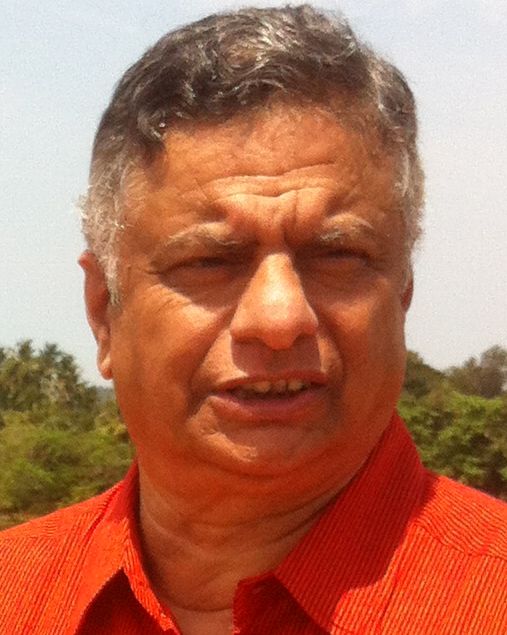Growing up in a Punjabi Town
Category:

TCA Srinivasa Raghavan grew up in Madhya Pradesh and Delhi. He has a Master's degree in Economics from the Delhi School of Economics and a BA degree from Hindu College, Delhi. He worked for Macmillan as the Economics Editor before switching over to journalism in 1980. He has been the Opinion Editor of various newspapers, worked on the RBI's history project, and written two books on the government and the economy in India. His novel centred around publishing is due out soon.
I arrived in Delhi at the age of seven in 1958 when my father was posted there. I went to Sardar Patel Vidyalaya for six years. There were many children there whose parents had come from Punjab, both West and East. They had many prejudices, of which the three major ones were that all Madrasssis were black, that they all ate only rice and that they were darpoks (cowards). I didn’t fit this description, and was therefore a bit of a curiosity. I describe some consequences below.
Until the 1950s, Delhi was largely a Hindi-speaking town. But, in 1947 came the refugees from West Punjab (now Pakistan), and my memories of Delhi in the late 1950s and throughout the 1960s are of a predominantly Punjabi town.
What stands out particularly is the amazingly insensitive term of reproach or derision -yateem (orphan) - referring to a Partition orphan. A badly dressed or poorly-off person would be described as such.
And then there was the pronunciation. So, Connaught Place was Knaatplace\; Karol Bagh was Krol Bagh, Rajendra became Rajinder, and Ashok, Shokki - or, more usually, OySokki.
I, as a seven-year-old Tamil, was a curiosity. The children of the migrants in school with me had never seen one before. So, in the African style of names I was, for a brief while between the ages 7 and 8, known as M'drassi or OyM'drasssi. Perhaps it was hard for them to turn Raghavan into OyRghvn.
Many colonial myths were being broken in those days. I did my bit by shattering the one that categorised M'drassis as a timid, non-martial lot. It happened like this.
I had found a golf ball in the Delhi Golf Course. Having discovered its hardness and very bouncy properties, I invited a chap called M'lhotra - Malhotra, if you want to be fussy - who believed that all M'drassis were cowards, to bang the ball hard on the floor and watch it bounce. If it didn't do so in a monstrous way, he could keep the ball.
He did. It did ... and before he could move out of the way, it bounced right back from the ceiling on to his head. From then on he called me plain Oy ..., where the three dots signify deep Punjabi respect in the usual expletive-d way.
Today, Delhi is full of second and third-generation M'drasssis like my sons who say ‘chpatti' instead of chappati, or my niece who thinks sambhar is an ‘exotic lentil soup with a tamarind base'.
Their best friends, like mine, are Punjabis. We feel more at home with them than with anyone else. Tamil arrogance, Jat/Gujjar manners, and Punjabi doggedness - that's what becomes of Tamils who make Delhi their home.
Ask any Bengali.
A Gujarati School
On a hot May afternoon in 1958, along with my brother and sisters, I was admitted into Sardar Patel Vidyalaya. It was barely a year old and admission was easy because the best schools still had names with a St. in front. As the years went by, Sardar Patel was modernised by some wannabes to Surdie Pat, but that is another story.
Although our school was full of young Punjabi kids, the ethos was Gujju or even, when observed closely, Gandhian. Many teachers wore khadi, and I still do. When Gujarati is spoken, it still strikes a chord. At one point I almost married one, but providence saved me from lifelong servitude to abstinence and vegetarianism.
On one side of the school was Khan Market. It was a shabby place then, not the upmarket shopping area it is now. The shops were owned by, yes, the refugees. They were very kind to us kids when we slipped over for some forbidden delights like chewing gum and war comics.
I was once told that a former RBI Governor's father owned a bookshop there. It is still there. There used to be an Empire Stores also at the corner but it's gone now. It had a little cousin outside the Gymkhana Club, at the roundabout. There was also a post office there along with a petrol pump in the same building. It has been locked but not demolished for 55 years now.
On another side were the Lodhi Gardens and the under-construction India International Centre. I saw it from foundation upwards. Beyond that was Safdarjung's Tomb, followed by a dreary brown landscape of scrubland until you reached Qutab Minar. I remember being taken to it in a tonga by my parents.
In 1964, my father was transferred to Jabalpur. That ended my first encounter with the martial races. It would be renewed three years later when I returned to college in Delhi.
______________________________________
© TCA Srinivasa Raghavan 2018
Comments
Add new comment